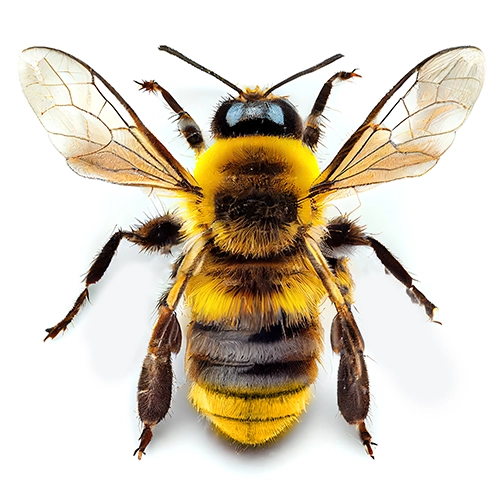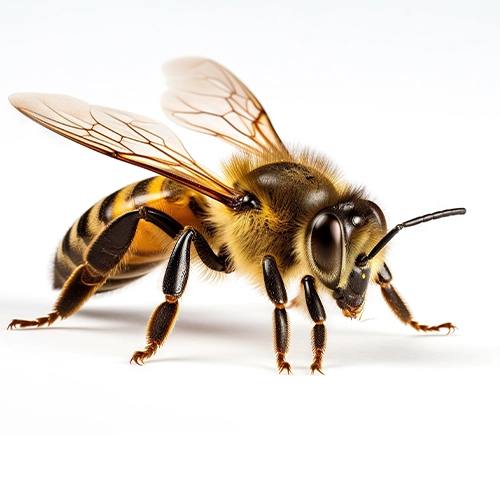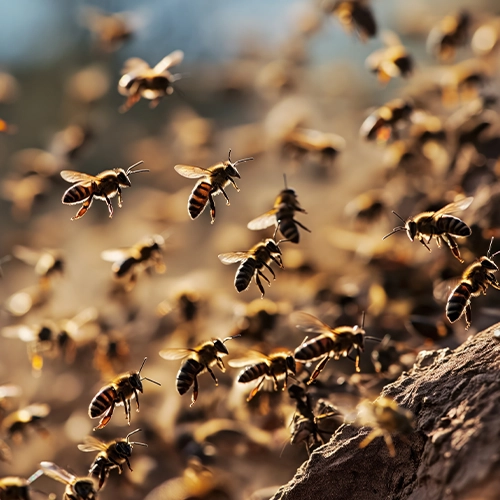A Comprehensive Guide to Species, Risks, and Effective Management Strategies for Homeowners

Bees contribute immensely to our ecosystem because they are the largest pollinators, which helps ensure continued crop production. Without these valuable buzzing insects, agriculture would take a major hit and affect human nutrition. Despite these advantages, they can be considered a pest when they are at the wrong place at the wrong time. For instance, they are definitely not a welcomed guest at your Colorado home. While here, they can be quite dangerous to you and your loved ones.
In such an instance, you need to deal with them carefully and have them removed as soon as possible. This article gives insights regarding these pollinators in the state, how to identify them, and the best management strategies for you as a homeowner.
Understanding Bees
Coming from the superfamily apoidea and the monophyletic lineage, these insects are widely known for their pollination advantages in the ecosystem. They are also producers of honey, which has rich health benefits. While most individuals might only be familiar with the honeybee, it is good to note that there are over 20,000 species of this important insect. Examples include the carpenter, leafcutter, and bumble.
They are found in all regions in the world, apart from Antarctica and can be easily spotted around plants that have insect-pollinated flowering. The most common in the United States is the sweat bees, which can be easily recognized from its small size. In fact, most individuals confuse it with other insects like flies and wasps. However, other species still exist and they come in different shapes and forms. For instance, the leafcutter is the largest and can get up to 39 millimeters in length.
These insects can take residence in a tree on your property because they will probably get their food, nectar and pollen, from there. The two are used as a source of energy and protein.
Why Bees Love the Climate and Environment in Colorado!
This state enjoys a lot of sunshine in most months of the year. This climate is not only good for the residents but may also lead to the presence of uninvited guests at your property. Bees love a good and warm environment, a major reason as to why this state has so many of them. Infestations are therefore quite common in this region, especially in homes with many trees.
The warmer months of the year are the most ideal for their existence in the state, especially from late spring all the way to early fall. During this time, encounters with these buzzing insects may increase, especially in areas with flowering plants. This is because the warm temperatures combined with blooming flowers during this period are conditions that enhance their activity.

Common Species in Colorado
The state has many types of this insect and they can only be divided into families for a bette explanation. This part of the article looks at exactly that.
- Apidae
This is the largest bee family in the world, meaning that it is the biggest family in the state. It contains over 5,700 species and some common ones found in Colorado include bumble and honey, which are the most frequently seen and others like cuckoo, carpenter, and digger bees.
The two popular ones in this family, bumble and honey, can be recognized by checking for a couple of features. Bumble is large in girth and quite robust. It has more hair on the body and has orange, black, and yellow colors. Its abdomen is rounded and its wings can be easily spotted because they are dark in color. On the other hand, the honeybee comes in a much more slender body. Unlike bumble, it has less hair on the body and its wings are not dark but translucent.
- Halictidae
This is the second largest family and has close to 4,500 species. Since they are attracted to perspiration, they are usually referred to as sweat bees. They are usually dark in color, usually dark or brown, and come in distinct shapes, forms, and patterns. For instance, some have yellow markings on their body, while others are partly green, blue, or purple.
- Megachilidae
It comprises of different kinds, many of which are solitary. They can be recognized by the restriction of their pollen carrying structure to the ventral surface of the abdomen instead of the hind legs as seen in others. They also have an elongated labrum. Common species in this family include leafcutter and mason. Leafcutter resembles honeybee but has an orange underside abdomen. On the other hand, masons have a metallic green or bluish color.
- Andrenidae
Also referred to as mining bees, these ones are also solitary and ground nesting. They are small to medium-sized and can be set apart from others because they have two sub-antennal sutures on the face. They come in different colors but many are black while others have a bright-red color.
Signs you are dealing with an Infestation
It is very common to see some buzzing around your house, especially if you have trees around. However, seeing a swarm in your property for a couple of days could mean that they have found a new home. At such an instance, you might just be dealing with an infestation.
- More Than Usual Activity
It is very common to see some buzzing around your house, especially if you have trees around. However, seeing a swarm in your property for a couple of days could mean that they have found a new home. At such an instance, you might just be dealing with an infestation.
- Injuries on Humans and Pets
Bees can be quite peaceful unless disturbed. If you just happen to be doing normal tasks at home and get stung, especially several times, it could mean that you are causing a disturbance in their newly found home. You may also notice injuries on your pet coming from the stings. Pets, especially dogs are quite curious and may be attracted to the buzzes. This can cause a disturbance and they will definitely sting.
- Dark Spots on Walls or Ceilings
You might not know this but these insects love secluded spaces. Due to this, they may find a perfect spot in your ceiling or small cracks and openings on your wall. When they increase in number and start producing a lot of honey, it may start spilling on the wall or ceiling, leading to dark spots.
- Increased Noise
If they are in your property, you will definitely get to hear buzzing noises. If you hear them for the first time, they may just be passing in search of a new home. However, if the noises prolong for a couple of days, it could mean that they found refuge on your property.
- A Bad Smell
They produce a lot of organic matter in terms of dead bees and honey. With time, these start to produce an unpleasant odor. This matter needs removal for the smell to end completely.
Potential Risks of Having Them at Home
- Stings
As earlier mentioned, these insects can be quite dangerous as they may sting when disturbed. This can cause injuries to you and your loved ones. Additionally, it could lead to allergic reactions. Pain and reactions are situations that you do not want to experience.
- Structural Damage
Since bees may find refuge in your home’s walls or ceiling, the honey and other organic matter could seep into these parts of your house. Eventually, you may end up with structural issues that need solving later on. This means having to spend extra time and money dealing with this challenge.
- Attracting Other Pests
It is good to note that not just humans love honey. Its presence in your home can lead to other uninvited guests that want to indulge in this sweetness. You may therefore end up having to deal with other insects and rodents.
DIY Management Strategies
Although dealing with them is quite dangerous, you may still want to go ahead and remove them from your property, especially if you are dealing with a small number. In such an instance, you want to be equipped with the right tools and skills to perform this task.
The management strategy that you plan to use will highly depend on the type you are dealing with. It is not a good idea to use pesticides especially on species like bumble and the honeybee. These need experts for their removal. However, if you are dealing with a type like the carpenters, you may want to protect the wood by treating the holes using a foaming aerosol and a wood putty. The foaming aerosol will kill them and destroy any eggs hiding inside while the wood putty will seal any visible holes to prevent them from coming back.
Apart from pesticides that kill, you want to use home remedies that act as repellents to help force them live elsewhere. Some examples of these that you can implement include vinegar spray, citrus, and garlic spray. All you need to do while using these remedies is to spray on the hive. You will know that they work if you do not see them after some hours.

Reasons to Hire Experts
Bees are an important part of the ecosystem. Dealing with them by yourself is not only dangerous but you may also end up killing them, which is not a very good thing to do. This is why you want to leave this task to the professionals.
Professionals in Colorado have the right knowledge and expertise to remove them properly without causing any injuries to you and your loved ones. They understand most species and they will know the best remedy for each. They also possess incredible gear like gloves, body suits, and masks that they implement when doing this job. With these tools, they can even handle the greatest swarms
Preventive Measures You Can Take
You may not do a lot to prevent them from nesting on the trees in your backyard. However, you can take some actions to prevent them from making your house their next home. As previously stated, they love nice and secluded spaces. They can get into your home through small crevices and openings on the walls. To prevent this from happening, it is advisable that you check your home for any structural damage and have the issues fixed as soon as possible..
Bees are valuable pollinators. However, their downsides might outweigh the benefits if they find their way into your house. While here, they are not only dangerous to your loved ones but they can cause significant structural damage. To prevent this from happening, it is good to deal with them as soon as possible. You can decide to use some DIY methods but they can be quite risky. This is why you want to invest in professional pest removal services in Colorado.
If you think bees are causing you problems in Colorado Springs, CO or anywhere in Teller County or El Paso County, please do not hesitate to
contact us today! We will help resolve your problem quickly, safely, and at affordable rates.
